
Mount Rushmore before the faces were carved into it. (Photo: National Park Service)
Carved into a rock cliff towering over the South Dakota landscape, Mount Rushmore is the quintessential American monument. Four presidential faces peer down: George Washington, Thomas Jefferson, Theodore Roosevelt, and Abraham Lincoln. Gutzon Borglum, the designer and sculptor of the monument chose each figure to represent the founding, growth, development, and preservation of the United States, respectively.
Though it is primarily referred to as Mount Rushmore now, this wasn’t always the case. When construction began in the 1920s and 1930s, the mountain was originally known as “Six Grandfathers” (Tȟuŋkášila Šákpe) by the Lakota, one of the Indigenous peoples to whom the Black Hills region of South Dakota belongs. Peer back into history with these images from the mountain’s transformation to understand more about Mount Rushmore and its place in complex American history.
History of Mount Rushmore
Mount Rushmore was, by any measure, an impressive architectural feat. From 1927 to 1941, workers blasted rock away with dynamite, chisels, and drills. Workers climbed 700 steps to the top of the mount, then were lowered on thick metal cables to work the stone face. Dynamite was strategically planted in the rock to detonate away unwanted material. The rough shape was then perfected by a technique called honeycombing. Drill holes were made in the stone to give it the appearance of honeycomb and weaken it for hand carving. A bumper tool smoothed on the finishing touches.
Even during construction, Americans were interested in Mount Rushmore. The National Park Service reports that early visitors sought to take home pieces of the granite mountain. As each figure was completed, the heads of the presidents were dedicated with ceremonies attended by the like of present-day presidents. The site quickly drew tourists from around the country. It even featured in Alfred Hitchcock’s 1959 thriller North by Northwest.
Controversy of Mount Rushmore
These images of Mount Rushmore before—and during—construction show the impressive amount of work that went into the massive monument’s creation, but they are also reminders of great controversy. The four faces represent “the great white man” theory of history which held sway in the academy until the later 20th century. The presidents include two slaveholders (Washington and Jefferson), an imperialist who believed in the superiority of white people, and Lincoln. (The latter, while popularly remembered as a heroic president, ordered the largest mass execution in American history, the hanging of 38 Sioux warriors.) Christine Gish Hill, professor of anthropology at Iowa State University, highlighted the problem of Mount Rushmore—engraved with these legacies—becoming “a space for uncomplicated patriotism.”
So what is the more complicated story? To begin, the mountain has a long and ongoing history as a sacred place for Indigenous people on the Great Plains, especially the Lakota, Cheyenne, and Arapaho. The Black Hills region—a beautiful and unique landscape in South Dakota—was home to many. As white settlers from the east pushed west under theories of “manifest destiny” and in search of gold, the Indigenous residents of the Dakota were forced to try to stop the displacement by treaty. The United States government promised the Black Hills to the Lakota Sioux in the Treaty of Fort Laramie in 1868, signed by the famous General William T. Sherman.
Like many treaties made to Indigenous people, this promise did not last long. The brutal Great Sioux War of 1876 included Custer’s “Last Stand” at Little Bighorn, where Indigenous warriors defended the Black Hills. The United States officially broke their treaty in 1877. White settlers overran the area, but the Lakota tribes eventually took their fight to the courts, accusing the U.S. of theft in the 1920s. The Six Grandfathers were eventually carved and dubbed “Mount Rushmore” after a New York lawyer. Yet still today, protests and calls to return the stollen sacred land ring strong.
These images of Mount Rushmore before and during its construction show a view hard to imagine today. Crafted by a sculptor associated with the Ku Klux Klan, on stollen sacred land, and featuring four historical figures with grave deeds to their name—Mount Rushmore is a monument to wrestle with, to consider, to contest. How it came to be is part of a larger, complex, not always pretty American story, and the best way to avoid “uncomplicated patriotism” is to engage with this past, present, and future.
Mount Rushmore Before & During Construction
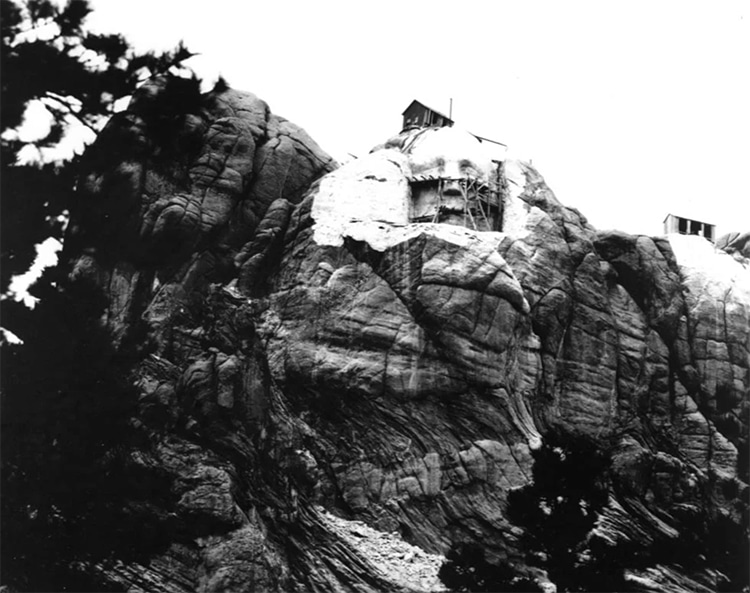
Photo: National Park Service
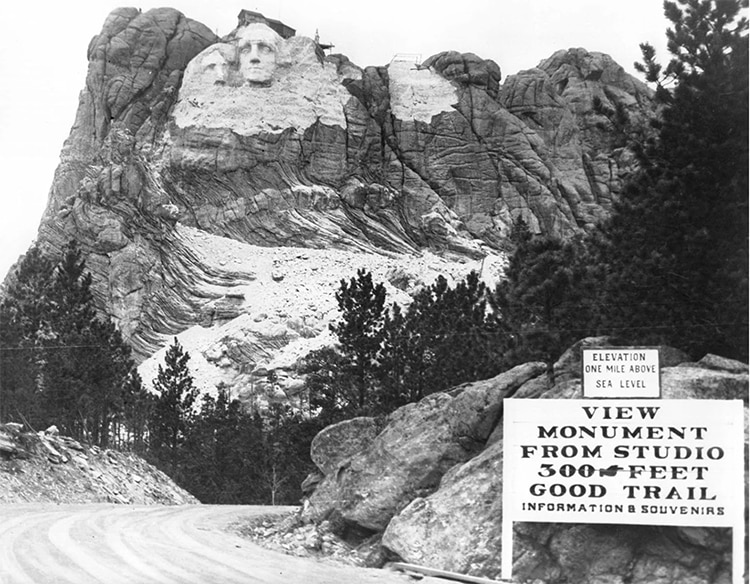
Photo: National Park Service
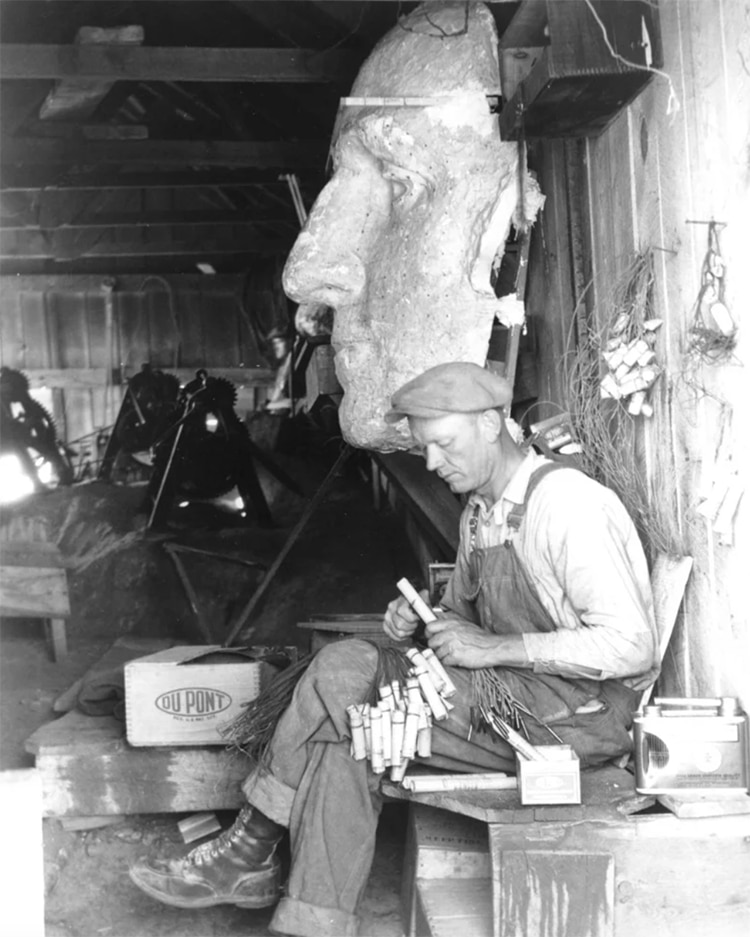
Photo: National Park Service
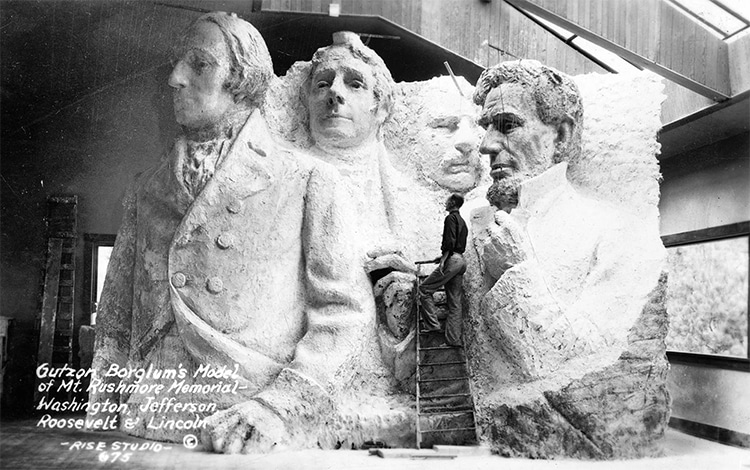
Photo: National Park Service
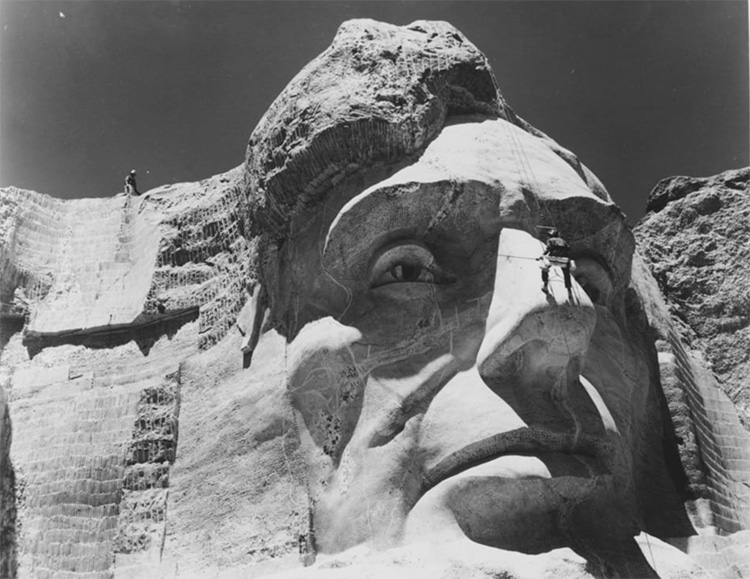
Photo: National Park Service

Photo: National Park Service
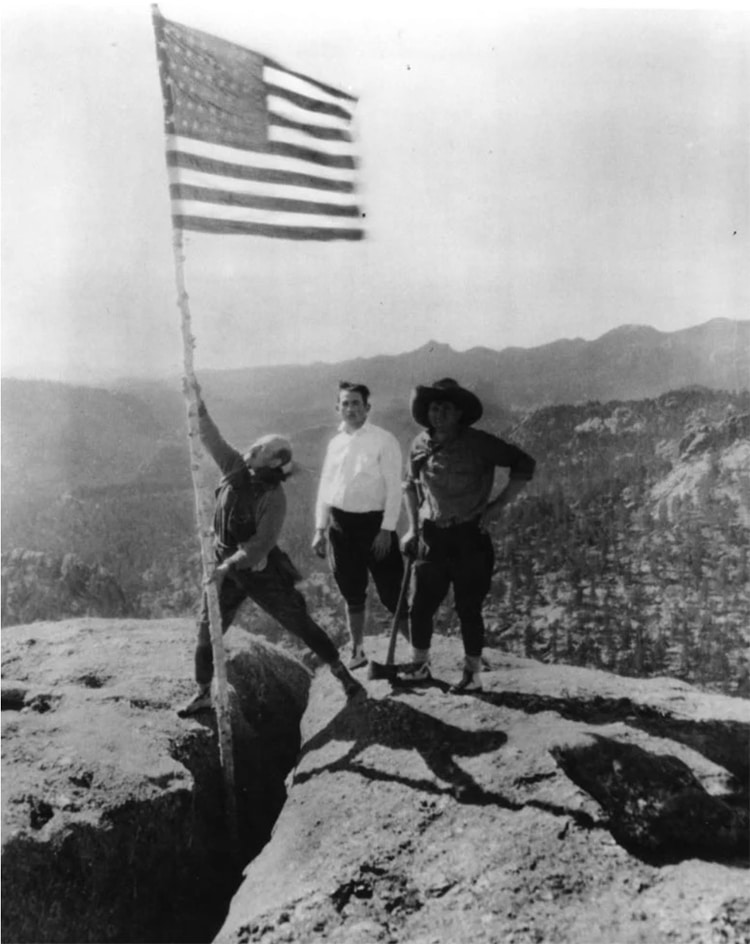
Photo: National Park Service
h/t: [PetaPixel]
Related Articles:
18 Famous First Photographs in History: From the Oldest Photo Ever to the World’s First Instagram
New Digital Archive Features Over 2 Million Photos from the First 100 Years of Photography
Here’s What the Monumental Rosetta Stone Says
Amazing Astrophotography Showcases the Fiery Beauty of Monument Valley in Arizona
